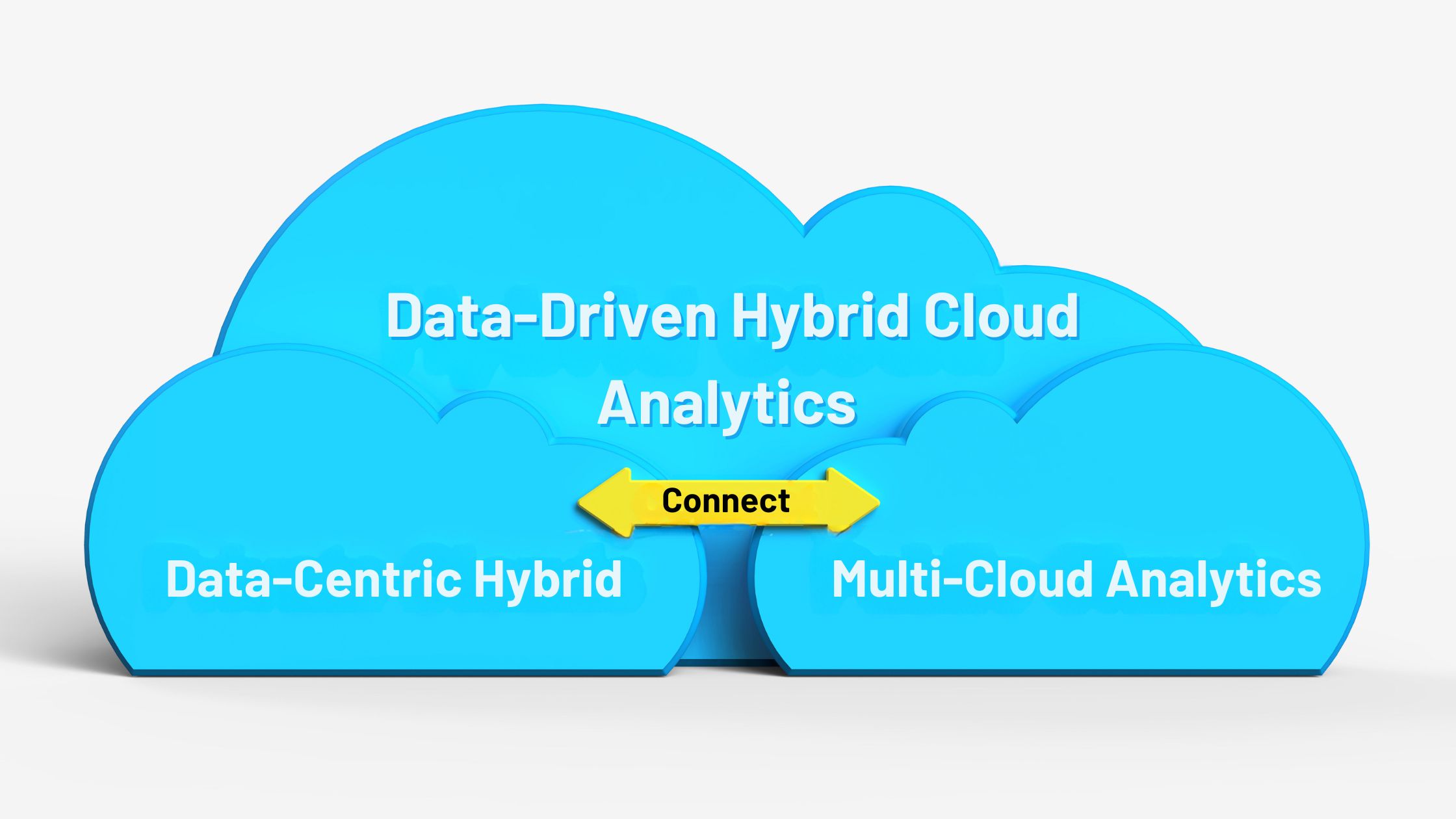
Introduction
Are you ready to unlock the full potential of your data in an era where information reigns supreme?
In the era of Big Data, the focus shifts from if to how to effectively utilize analytics. Data-centric hybrid and multi-cloud Analytics have revolutionized the landscape, offering unparalleled flexibility and scalability to organizations.
In fact, as per the 2023 State of the Cloud Report by Flexera, ‘an impressive 72% of businesses have embraced a hybrid cloud strategy, amalgamating both public and private cloud solutions to accelerate their decision-making processes’. However, amid the promises of these technologies, there are also formidable challenges to navigate.
In this blog, we’ll explore the best Practices in Data-Driven Hybrid Cloud Analytics and confront the complexities of Hybrid and Multi-Cloud Analytics.
What are Hybrid and Multi-Cloud Analytics?
Hybrid analytics, a pioneering data management approach, seamlessly merges on-premises infrastructure with cloud computing environments. This strategic integration extends to multi-cloud analytics, encompassing various cloud providers. By amalgamating data from disparate sources, including local servers and diverse cloud platforms, organizations gain unparalleled insights. This synthesis facilitates astute decision-making, empowering businesses to thrive in an increasingly data-driven world.
This strategy enables enterprises to leverage the strengths of different platforms, optimize costs, enhance data security, and ensure scalability. With Data-Centric Hybrid and multi-cloud Analytics, businesses can gain deeper insights, improve data accessibility, and maintain flexibility in adapting to evolving technological landscapes, ensuring they can stay competitive and agile in an increasingly data-driven world.

Challenges in Hybrid and Multi-Cloud Analytics
- Data Integration Complexity:
One of the primary challenges in hybrid and multi-cloud analytics is the complexity of integrating data from various sources across different cloud providers and on-premises environments. Ensuring seamless data flow and compatibility between these disparate systems can be a daunting task.
- Vendor Lock-in and Interoperability:
- Organizations adopting multi-cloud strategies often face the risk of vendor lock-in. Each cloud provider has its proprietary services and technologies, making it difficult to switch providers without significant effort and cost. Ensuring interoperability between different cloud services and preventing vendor lock-in requires careful planning and consideration.
- Data Security and Compliance:
Managing data security and ensuring compliance with regulations (such as GDPR, HIPAA, etc.) becomes intricate in hybrid and multi-cloud setups. Data may need to move between different environments, raising concerns about data privacy, access control, and encryption standards, making it challenging to maintain a consistent security posture.
- Cost Management:
Hybrid and multi-cloud environments can lead to complex cost structures. Managing and optimising costs across different cloud providers and on-premises resources is challenging. Without proper governance, organizations might overspend due to redundant resources, inefficient usage, or lack of visibility into the overall cost implications of their analytics workloads.
- Cloud Sprawl:
Cloud sprawl occurs when organizations fail to monitor and control their cloud resources effectively. In the context of multi-cloud strategies, if unused services and resources are not identified and decommissioned, it leads to unnecessary costs and resource wastage. Preventing cloud sprawl requires implementing robust monitoring, governance, and cost management practices to optimize resource utilization and control expenses.
Best Practices for Successful Hybrid and Multi-Cloud Analytics

- Data Integration and Standardization:
To succeed in hybrid and multi-cloud analytics, prioritize robust data integration and standardization practices. Ensure that data from disparate sources and cloud environments can be seamlessly combined and transformed into a unified format. Consistent data standards and definitions are essential for accurate analysis and insights.
- Scalability and Elasticity:
Embrace cloud-native technologies that provide scalability and elasticity to meet fluctuating analytics demands. Cloud platforms offer the ability to scale resources up or down as needed, optimizing performance and cost-efficiency. Design analytics solutions that take full advantage of this capability.
- Security and Compliance:
Implement stringent security measures and compliance controls across all cloud and on-premises components of your hybrid and multi-cloud analytics infrastructure. This includes encryption, access controls, auditing, and monitoring to protect sensitive data and ensure compliance with industry regulations and internal policies.
- Performance Monitoring and Optimization:
Continuously monitor the performance of your analytics workloads and cloud resources. Use advanced analytics tools and practices to identify bottlenecks, inefficiencies, and opportunities for optimization. Regularly fine-tune configurations to ensure that you are getting the best performance and value from your hybrid and multi-cloud setup.
By following these best practices, organizations can harness the power of hybrid and multi-cloud environments for analytics, unlocking greater flexibility, scalability, and insights while maintaining data integrity and security.
DataCrew: Your Gateway to Seamless Hybrid and Multi-Cloud Integration
In the ever-evolving realm of data-driven hybrid cloud analytics, the path to success is paved with a blend of expertise and innovation. It’s not just about keeping up; it’s about staying ahead in this dynamic arena.
DataCrew, a leading data and analytics modernization company, exemplifies what it means to be a pioneer in this field. By partnering with us, organizations can harness their unparalleled expertise, ensuring they glide effortlessly through the intricate hybrid and multi-cloud terrain. With DataCrew by your side, you’re not just analyzing data; you’re transforming it into actionable insights, propelling you into a new era of informed decision-making, and securing your competitive edge.
So, don’t just follow the data; lead it with DataCrew.